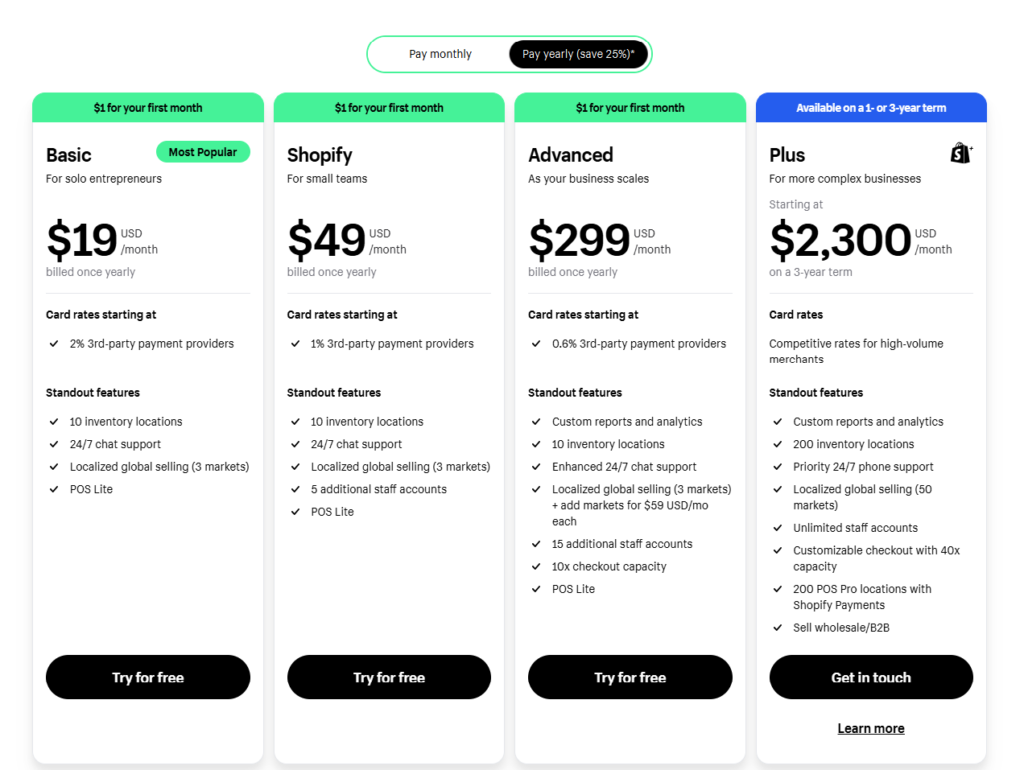Introduction
The Complete Step-By-Step Shopify Tutorial For Beginners. Although setting up an online store may seem overwhelming, turning to Shopify makes the task exceedingly straightforward. This Shopify guide offers step-by-step directions for every action you need to take in making your first sale on Shopify. At the end of it, you will be the owner of a fully functioning Shopify store equipped to receive customers.
Table of Contents
Why Use Shopify?
Shopify is quickly becoming one of the most popular e-commerce platforms-almost-where beginner merchants are involved. It’s easy to navigate, customizable templates with powerful features: the perfect choice for small businesses and first-time store owners.
Step 1: Setting Up Shopify
- Visit the Shopify website, then click “Start Free Trial.”
- Type in email, set password, and provide a store name (this becomes the initial domain name, e.g. storename.myshopify.com).
- You will then be taken through some questions by Shopify so it can understand your store’s needs.

Step 2: Choosing the Appropriate Shopify Plan
Shopify provides users with a 14-day free trial, during which time one can explore the features of Shopify before purchasing a plan. The plans are classified into three principal types:

Step 3: Customizing Your Shopify Store
Shopify has free and premium themes, among which you can use to customize your theme:
- In your Shopify admin panel, go to “Online Store” > “Themes.”
- Browse through the themes and select one theme; click on the “Customize” option.
- You can make changes as far as color, font, and layout are concerned, and you can add a logo to suit your brand.

Step 4: Adding Products
This is of utmost importance to getting products into the store. Here’s how:
- Go to “Products” > “Add Product” selecting an option from the admin panel.
- Type in a product’s name, description, and price.
- Upload good-quality product pictures and set SKUs.
- Write compelling SEO descriptions and include clear images to engage customers on every product.

Step 5: Setting Up Payment and Tax Configurations
By having the payment options secure, you can build trust in your brand. In order to do this:
- Head towards your Settings and opt for Payments from there to select a payment provider.
- Set up Shopify Payments for Card payments or else add options like Paypal.
- In the section Taxes, set tax settings based on your business location.

Step 6: Set Up Shipping
Shipping setup is pertinent if a smooth customer experience is to be ensured
- Go to Settings>Shipping and Delivery.
- Put forth shipping zones and rates(e.g., free shipping, flat rate).
- Enable Shopify Shipping or integrate third-party apps to print shipping labels.

Step 7: Test and Launch Your Store
It is important to check that everything works right before launching your store:
- Testing checkout: Place an item in your cart and test how the checkout process functions.
- Device check: View your site on mobile, tablet, and desktop to be assured of its responsive design.
- Launch: Once sure your store is fully good, remove the password under Online Store>Preferences to take your store live.

Marketing and Growing Your Shopify Store
Once your store is live, you’ll want to start bringing in traffic. Here are a few beginner-friendly strategies:
- SEO Foundations: Build clean and descriptive product titles, with good descriptions following the general keyword-specifying format.
- Social Media: Promote your store on Pinterest and platform like Instagram.
- E-mail Marketing: Use Mailchimp or Klaviyo type platforms/solutions to market your emails.
- Shopify Apps: Navigate Shopify’s app store to access additional support regarding email marketing and social sharing.

Shopify Analytics Performance and Optimization
Shopify has and offers good dashboards embedded with a few basic analytics that will help the merchant take the best decision on the performance of their online stores.
- Sales Data: They are key to helping you know the product that has more interest and which, therefore, should have more attention to optimizing on.
- Traffic Sources: You should be able to see the source from which your traffic comes from (social media, google, etc.).
- Optimize for More Conversions: Work on working better in issues concerning product descriptions, use quality images, and upselling.

Conclusion
Starting a Shopify store can seem daunting at first, but by following these steps, you will hand yourself the best shot at success. Continue trying new ideas, learning something new, and optimizing your store. You will never be alone in this journey-the ongoing resources and community offered by Shopify will always be there to help you.






Leave a Reply